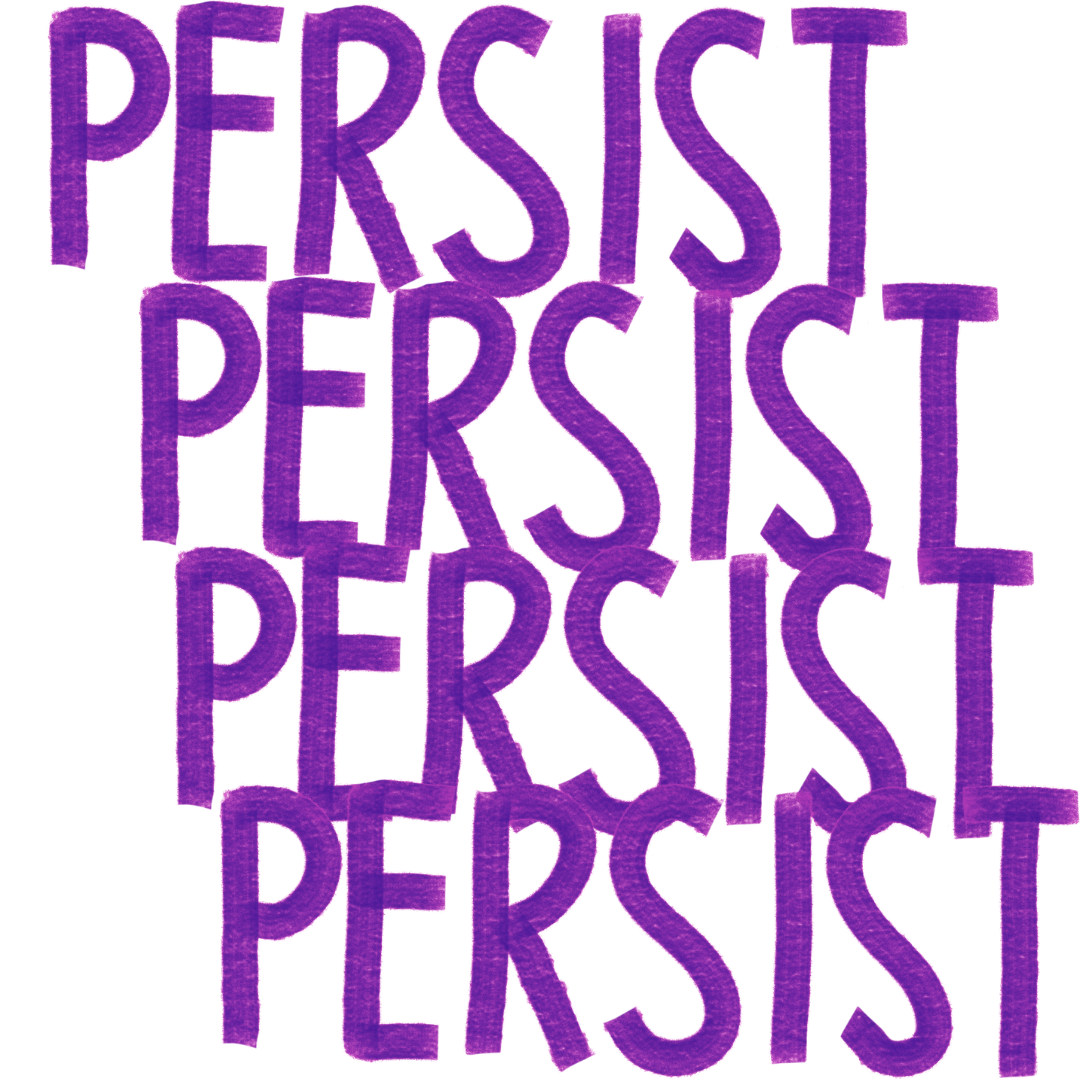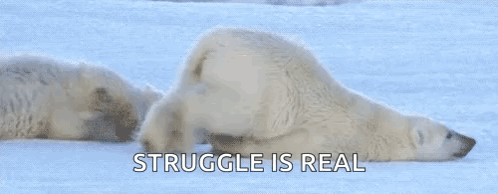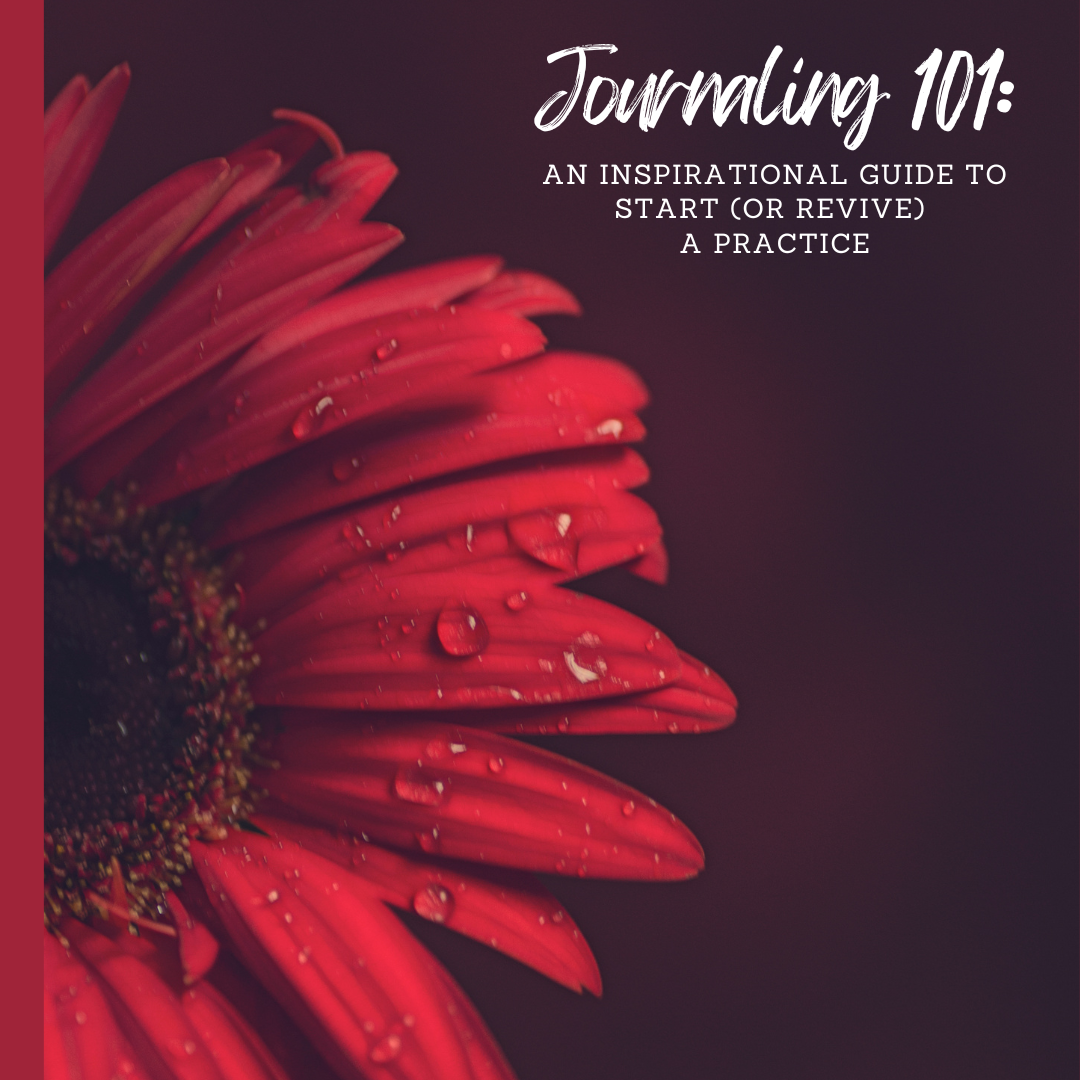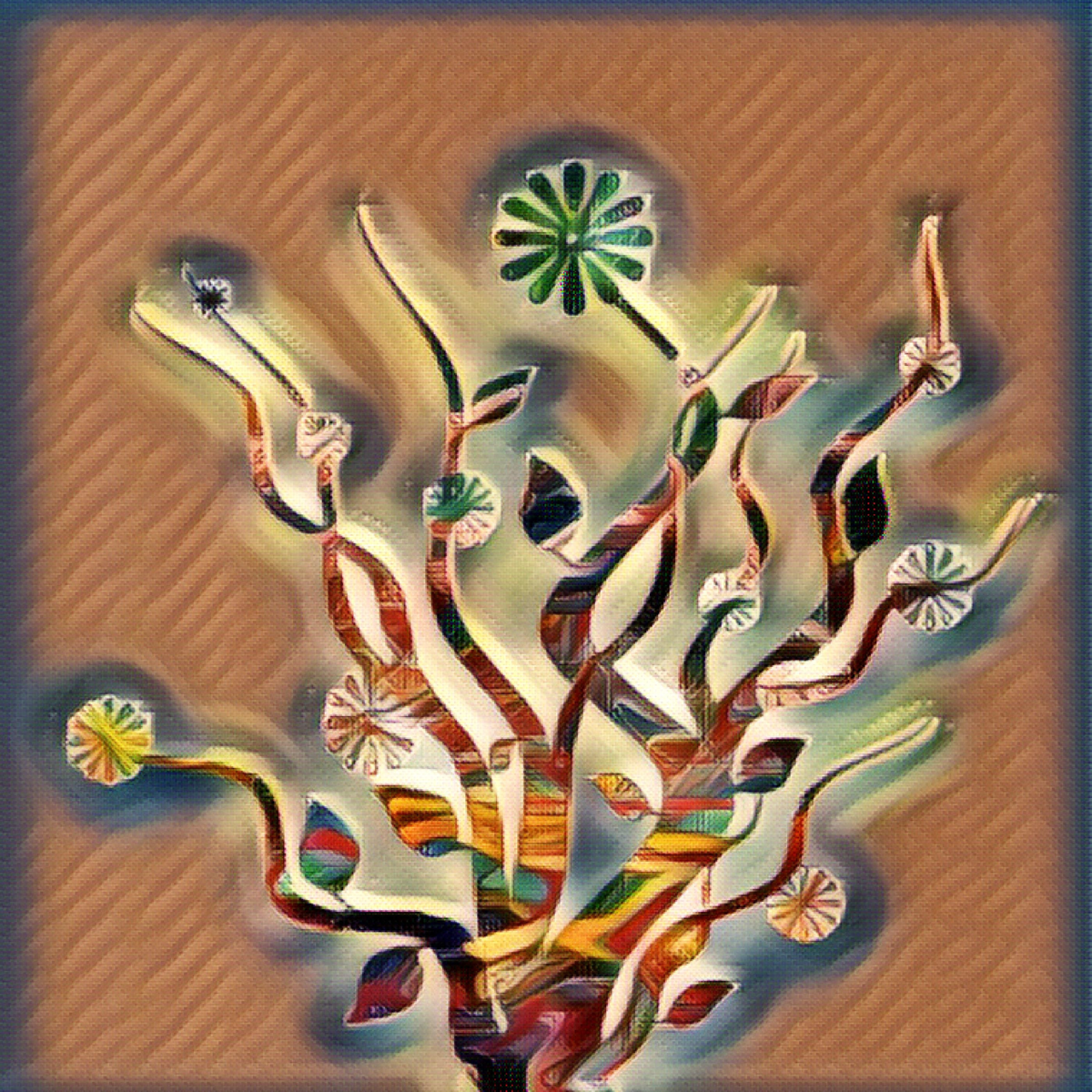Listen to Let the Verse Flow on Your Podcast Player of Choice
This is a transcript from episode #14 of the Let the Verse Flow Podcast.
Let's explore personal growth, self-growth, and coping with challenges. We are on a journey to know ourselves better, process our struggles, and take those first steps toward better days—they start with single better moments.
Personal Growth Can Blossom from Creativity
One of the reasons why I use creative tools like storytelling, poetry, and music in my podcast, Let the Verse Flow, is because personal growth, and all the ways that we look inward to better our lives and our emotional well-being, takes practice, planning and persistence. The three Ps of personal growth are practice, planning, and persistence.

But after a while, this can feel like a chore. It can feel overwhelming, boring, and unapproachable. However, personal growth through a creative lens allows us to use things that we find fun and enjoyable—for me, it’s writing poetry, journaling, and music—and put it toward the service of personal growth. All the while, I work through my thoughts and feelings, speak my mind through different word combinations and rhythms when writing poetry, and weave an emotional backstory through the use of beats and music. This creates an ongoing rhythm or pattern to my personal growth practice, and it can lay the foundation for yours as well. The growth I experience comes from knowing what I think, speaking my truth, and connecting with other people in ways that feel good. I’ve become more present in my life through these creative personal growth practices, and I want to share them with all of you.
Internal Fortification: Self Growth
Let’s dive a bit deeper into the meaning of personal growth and self-growth so we know what we are working towards and why.
Personal Growth is self-growth; it’s the work you do to improve your attitudes, actions, reactions, and ways of thinking with the goal of having a positive impact on your work and personal life. As humans, we examine ourselves and strive to be better, however we define that.
There’s an African proverb that goes:
When there is no enemy within, the enemies outside can do you no harm.
In other words, when your internal house is in order, you have a much more formidable place from which to operate in the world. Others can’t hurt you as much, sway your decisions in directions you don’t like, or color your mood. They don’t control you because you are in control of the work you are doing for yourself.
In some ways personal growth has gotten a bad rep because when we talk about developing goals and habits in a prescriptive way that doesn’t tap into our natural tendencies, it can feel like bitter medicine that we have to swallow instead of something we get to do.
Setting Intentions Thru Meditative Affirmations
Here's an example. Many of you know that over the last two years, I’ve struggled with my weight. I had lost more than 60 pounds over a three-year period right before my mother got sick. For the first time in many years, I was eating well and exercising consistently, and feeling fantastic. I had reached a good, healthy weight and felt like I was on top of the world.
Then my mother got ill and the stress started to mount. I had to give up my weekly trips to the gym (I was a proud gym rat by then so this was hard). I spent a lot of time in ERs, doctor's offices, and then at home trying to take care of my mom. I didn’t eat well, I didn’t cook as much, and I didn’t go to the gym. Over the last two years, I regained 30 lbs, and I’ve struggled to lose it.
But where did my original successful weight loss journey begin? Not with a goal of losing weight on a diet. No, I had done that before and knew that it wouldn't work. Instead, I focused on wellness. I made goals to eat whole foods and exercise, and from that practice, the weight came off. I felt better than I had in years—empowered, energetic, whole.
Now that my mom has moved into an Assisted Living facility with good care and life has settled down a bit, I’m returning to my wellness practice. I’ve learned that willing myself to exercise and eat well does me no good. I must push into a reasoned approach where the focus is on wellness. So I practice affirmations and self-talk to grow my intention for better eating and exercise.

I’ve started to gently return to exercise, ending each session with a water meditation that relaxes me. I lay in corpse pose—my favorite yoga pose by far—and I breathe slowly in and out while I do a meditation with some key affirmations. I open my arms and stretch them out while opening my body and mind to the bounty of healthy foods and experiences in nature and then I close my arms, wrapping them around my shoulders to hug myself and bring comfort and support as I make a conscious decision to eat what’s best for me and to exercise with self-love. This informal meditation goes something like this:

This meditative and intentional affirmation is part of my personal growth practice and it’s tied to my goal to eat whole foods and exercise to support a healthy body and spirit. I don’t do it every day. I don’t add it to a productivity calendar, and I try to talk gently to myself when I lapse or miss my mark. This is not an opportunity for me to scold myself, to bash myself, this is an opportunity to grow, and growth takes time and practice. I’m sorry that it’s part of the deal, but it is. Really anything worth having is worth working toward. Isn’t it?
Personal Growth: The Difference Between Struggles and Trauma
So, there’s intention and goal setting. There’s self-talk about not judging yourself when you fall short. The other important component to facilitating personal growth is developing coping skills to help process emotions, work through struggles, and look for internal growth or changes in thinking and perspective.

Before I talk about coping and working through struggle, I have to say that while I often talk about growing through struggle, I realize that everyone is at a different stage in life, and just because I’m at the stage where I’m trying to make sense of my struggle and grow from it, doesn’t mean you are. I went through many months of hell before I could pick myself up, regroup, and try to figure things out. Sometimes our struggle is so big or traumatic, that it offers little chance to grow in the moment, or the self-growth may not happen for many months or years after the trauma.
Also, there is a difference between challenges, struggles, and trauma. The level of struggle, plus our overall resilience and ability to bounce back from struggles, impacts the timeline and progression we may take when seeing the growth potential from a negative event.
If we are challenged but believe that we can overcome that challenge, then tackling it may give us a sense of meaning and accomplishment. But if we feel powerless to overcome the struggle, especially if it involves physical, emotional, or life-threatening harm, we may experience trauma. So both the depth of the struggle and the feelings we have about whether we think we can overcome the struggle impact our ability to see and believe that we can grow from it. What’s most important to me is that you feel however you feel, and recognize that you may or may not be in a stage where you can grow from your struggles. Also, some struggles are so severe that they cause ongoing trauma, deep trauma. Growing after trauma is highly individualized, and likely requires that we reach out to a mental health professional. When I talk about my trauma, I do it with my therapist because she is most qualified to help me process how I feel in a safe space.
Also, I have an ace in the hole when it comes to coping: it's my writing. Writing poetry, engaging in wordplay, listening for rhymes and rhythms, and contrasting thoughts, all these activities bring me pleasure. A diversion for sure. Here’s my latest poem on the timing of personal growth. It’s called No Rush of Falling Leaves.

No Rush of Falling Leaves
By Jill Hodge
A child will yell, kick or scream for wants and needs
But as they reach their prime, they settle down, corral their dreams
Hold on, you shake the tree, but you can’t rush the falling leaves
A season determines when they are ripe to fall
When the weight of life has come to call
Down they fall, the leaves are dead
A breeze picks up and leaves have fled
Unease can find its resting place upon your head
For there are days when thoughts settle in, we call it dread
But as the leaves have died, so does the struggle
We can survive
Twisting thoughts grow and embed the mind
As time takes its sweet old time
We wonder when our turn has come
Have faith we do, from rising to setting sun
We begin again, resigned to make it through
A breathful moment, a savored view
And use our sack of crisp, fall leaves
to guide us down the next path of broken-down trees
Healing works on its own schedule and is influenced by the depth of the challenge or trauma and our internal resources (coping skills, perception of the events) at the moment. Also, you can obviously grow internally and in positive, affirming ways during joyful times in your life. There are many ways to approach personal growth, but developing coping skills is a good place to start because they are some of the most useful skills you can develop when facing life’s struggles.
Developing Positive Coping Strategies
There are negative and positive coping strategies. Some of the negative ones that I’ve engaged in are overeating, perfectionism, overthinking, and busy work. Others use drugs, alcohol, shopping, avoidance, gambling, sex, social media consumption. Many of these are diversions that we grab onto to placate our feelings of overwhelm, unhappiness, anger, and shame.
Luckily there are many types of coping methods and skills. Here's an article that includes more than 60 coping skills categorized by type. So coping skills and methods can be categorized as:
- diversions (things you do to take your mind off something)
- social/interpersonal (engaging with someone you trust or enjoy spending time with)
- cognitive (using your mind to reason you out of a difficult situation)
- tension releasers and physical (physical-based activities that tap into the mind-body connection)
- spiritual
- limit setting (prioritizing some tasks over others and making time for yourself)
I've talked about many of these coping skills on the podcast. For example, some diversions we’ve discussed are creative activities (writing, painting, dance, music) and walking, social/interpersonal coping through setting boundaries and caring for a pet or someone in need, cognitive coping (making a gratitude list, writing down a list of pros and cons for decisions and journaling), tension and physical strategies (exercise, crying, feeling emotions, slow breathing) and spiritual (meditating, enjoying nature, getting involved in a worthy cause to help others).
See Season One, Episodes #9 and #10 of the podcast on mindful breathing and building resilience for a discussion on physical and social/interpersonal coping strategies.
One of my coping skills (a diversion) is listening to music. It can take our minds off our troubles and offer a way to connect with ideas, rhythms, and patterns that our brain finds pleasurable to focus on. We divert our attention away from our problems and dive deep into the music. We think about the lyrics (do we understand them, believe in them), we tap into the beat and rhythms (do we sense a pattern), we jive with the melody and chime in to sing with the chorus. Music is a wonderful diversion, and I’ve used it to cope many times. It’s always there for us, and with all the many musical genres, everyone can find something they will happily engage and divert their attention so they can cope with uncomfortable feelings. Listen to Season One music video playlist for songs that have helped me cope.
Two (2) Coping Skills: Getting Out of Your Comfort Zone & Being Kind
One effective cognitive coping strategy you can try is to shake things up and get out of your comfort zone. Set a challenge for yourself, say starting a new creative hobby, and then tackle it with a positive attitude. We put our positive energy (even if we only have a bit of it) into that activity. We try something new and risk failure because we believe it may be worth it.
Let’s say you’ve always wanted to learn to swim, but you’ve never learned any formal strokes and you fear your endurance is poor. What if you signed up for a beginner’s swimming class at the local YMCA or gym? You sign up, then you show up, for a few weeks and start diverting your mind and your thoughts toward this new goal of learning to swim laps.
What starts to happen? You get better at swimming for sure (even if it’s only a bit better), but you may also replace some of the rumination, overthinking, and negative thoughts that you were engaged with before. You don’t have time for them, you move on from them and while engaged in a new challenge, you move some of your mental resources over into sustaining another activity (and that activity feels good).
I’ve done this through my water meditation. I want to improve my ability to eat healthy foods, so I engage in a small but mighty practice of meditating on supportive ideas. Eventually, I intend to grow in that direction. I am challenging myself and setting an intention that my mind will think about throughout the day and eventually help me work toward. So set a challenge—but a fun challenge for a new activity that you want to dive into. Set an intention to devote time to it and divert some of your thinking away from your troubles, and toward a new, more joyful path.
Another effective coping strategy relies on extending yourself further away from your inner state by doing one kind thing for someone else. You have to be in the right head space for this coping strategy, but it can be highly effective when you don’t know what to do with your own life, especially if you feel stuck or overly emotional. You put those feelings aside for just a bit and think of one kind thing you could do for someone else. It could be writing them a nice note, sending them a care package, researching and donating to a worthy charity, or getting groceries for an elderly neighbor. I think it’s best if you find something out of the ordinary—not part of your typical caregiving routine.

The amazing thing about this is that while it may initially seem like it takes too much effort (and your energy may be sapped from the emotional weight of your struggles), the giving act itself feeds your internal energy. You realize you are connected to other people, you recognize your kindness and open spirit. Maybe you receive a thank you from someone who appreciates you, and you build a bridge that takes you from your current struggle or negative mood state to a slightly brighter one. Start small with this coping strategy, don’t overwhelm yourself with too much. A small gesture will do to start.
📚Journal Prompts for a Growth Mindset
Personal growth can come from many different avenues—and show itself in different ways. For example, we can learn to process and control our emotions, we can build resilience to bounce back after challenges, we can be more mindful and grateful for the good in our lives to impact our mood, we can learn to sit with feelings and grow a sense of acceptance and we can change the way we conduct our lives by setting boundaries with others or advocating for our needs. We can challenge ourselves to start new creative activities and give to others to decentralize our feelings.
There are so many ways in which personal growth is possible, but it starts with a growth mindset. I think of a growth mindset as the way you invite and open the door to the possibility of growing and changing for a better life. That belief that you can grow is critical to moving toward positive change. Here are some journal prompts on a growth mindset and coping skills to work through this week.
Personal growth can happen in happy times and after sad ones, it can come from challenging ourselves or gently nudging our thoughts and actions in a new direction. However it comes, may we be grateful for it, work towards it, and have faith in its power to add purpose to our lives. Until next time, may you stay on the bright side of the beat. 🌞
Music: My thanks to all the musicians who make incredible music and have the courage to put it out into the world. All music for my podcast is sourced and licensed for use via Soundstripe.
Songs in this podcast episode:
Thank You by Demure; Winning Streak by JeesGuy; 432hz Crystal Meditation by Roze Sound; Fade by Nu Alkemi$t; Pyaar Kee Seemaen by Cast of Characters
Related Episodes/Articles: Calming Down with Mindful Breathing & Creative Grounding (#9); The Road to Brighter Days: Building Resilience (#10)
LTVF Season One Music Playlist: Check out the songs that inspire me, and connect with artists from many genres who add to our collective, human soundtrack.
Listen to Let the Verse Flow on Your Podcast Player of Choice
Check out the resources on this website (and subscribe) to get podcast episodes, poems, articles, music playlists, and journal prompts delivered to your inbox.
Then, connect with me on Instagram. Let me know you hear me out there!

Sign up for the Let the Verse Flow Newsletter and get access to all my articles, including this free journaling guide.
Let the Verse Flow is an independent publication launched in June 2023 by Jill Hodge. If you subscribe today, you'll get full access to the website and newsletters. Members are vital to building a rich community of diverse voices. Join us by subscribing today; consider a paid subscription to support the community if possible. Thank you!



